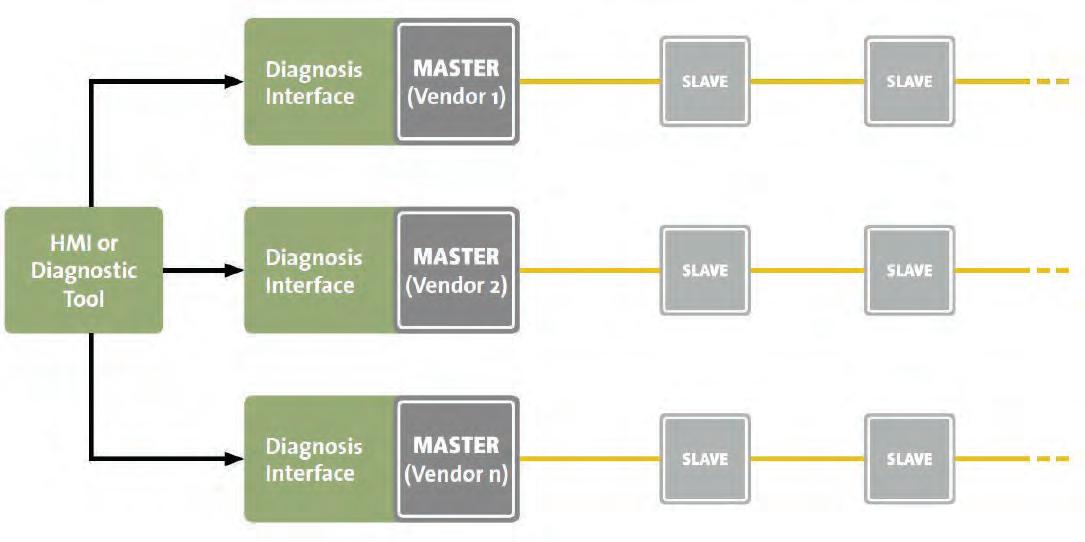Technology
Master-independent diagnostic interface for EtherCAT networks
SOURCE: ETG
The EtherCAT diagnosis interface provides machine and network diagnostic tools a general purpose, universal interface for EtherCAT networks. Tools can be used without the need to change specific master manufacturer or a vendor-proprietary access protocol for each different master implementation.
EtherCAT master independent diagnostic interface.
DIAGNOSTIC CAPABILITIES ARE KEY features in determining the success of a fieldbus technology. To further improve the diagnosis in EtherCAT networks, the EtherCAT Technology Group (ETG) has defined a vendor independent diagnostic interface with the specification ETG.1510 “Profile for Master Diagnosis Interface”. This enables EtherCAT masters to provide detailed network diagnostic information and health status to third party tools in a user friendly and standard way.
Importance of availability
In modern industry machine and plants, availability represents one of the most important factors in order to guarantee efficiency and competitiveness. EtherCAT enables this by means of a well-proven technology relying on a robust communication infrastructure. Yet, industrial environments can be challenging even for reliable communication technologies like EtherCAT. Constantly moving parts or continuous vibrations could cause temporary link losses or even cable breaks in the long term, while EMC disturbances could falsify signals travelling on the communication path. In all these cases, the diagnostic capabilities of the fieldbus
8
represent the key element in order to detect errors, determine its location and possible causes, and reduce thereby the machine downtime as much as possible. In terms of diagnostic capabilities, EtherCAT supports outstanding features that go far beyond the corresponding capabilities of traditional Ethernet. The necessary information is either provided by the EtherCAT communication chips (ESCs) directly in hardware or by software functionalities. Therefore, no specific extensions are required on slave side.
EtherCAT datagram
Each EtherCAT datagram ends with a 16-bit Working Counter field, which is expected to be incremented by all slave devices addressed by the datagram itself. A mismatch between the expected and the received value of the Working Counter means that not all slave devices successfully processed the datagram, and that they are therefore not working with consistent data in the current cycle. This can trigger an immediate error reaction on control (master) side; by default, input data carried by the datagram is discarded in this case. Additional information can be acyclically
retrieved by the master and enables to investigate the location as well as possible causes of the communication issue. At hardware level, each EtherCAT Slave Controller monitors and detects link loss as well as signal corruption on each port and increments in case the corresponding lost link counter or RX error counter, respectively. Communication errors at software level, like the expiration of the watchdog on the cyclic data or a loss of synchronization within the network, can instead determine an unexpected state transition in the EtherCAT State Machine. They are displayed by means of the AL Status Code value, which is returned by the software stack whenever the unexpected state transition occurs. All the necessary diagnostic information to monitor the network state as well as to detect and locate errors is therefore available to the master in all EtherCAT networks. Yet, this “raw” information needs to be provided to diagnostic tools and to end users in order to be interpreted and used. With the ETG.1510 specification “Profile for Master Diagnosis Interface”, the ETG has defined a solution enabling external tools to access the diagnostic information provided by EtherCAT
in d u s t r ial et h er ne t b o o k
2.2020















